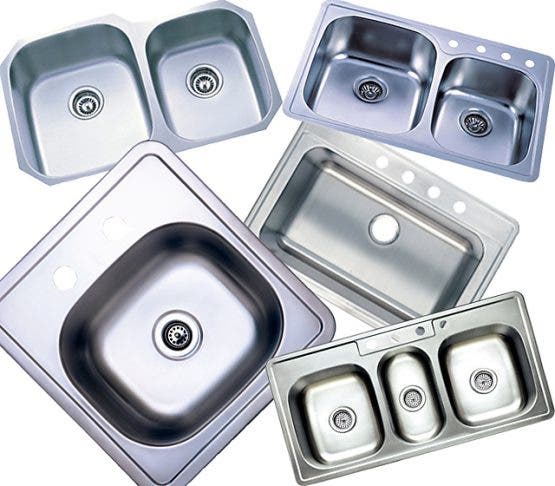Get [PRO] Pricing
Get [PRO] Pricing

Selecting a sink can be one of the most overwhelming decisions you will make when remodeling your kitchen.
Choosing a kitchen sink is not something you can replace easily without incurring a huge expense. The best way to avoid that is to be well-informed and have your priorities defined before making this decision.
The first thing to consider is, “What material do you want?”
Cast Iron is probably one of the most popular choices.
THE PROS
o Appearance – Cast iron is the most versatile material for kitchen sinks; it is available in many different color options and provides a high luster finished look to your kitchen.
o Resistant to water spots – Cast iron is less prone to showing water spots. However, if you think water spots will bother you, stick to lighter colors. A black or high-gloss red will look great in the showroom but it may prove to be the source of much frustration when you realize that you have to wipe it down after every use—just to keep that glossy look that you felt in love with at the showroom.
o Durability – Because of its construction, cast iron sinks will not crack or dent easily.
THE CONS
o High maintenance – I know we had listed durability as one of the pros, but because its finish can get easily faded and scratched, we see it as more of a con. The enamel surface covering the cast iron is brittle and as such, it is prone to chipping should anything such as a cast iron skillet happen to fall into the sink. On the other hand, if you add a bottom rack and a couple of rubber mats—apply carnauba wax. Do not leave anything sitting inside the sink, and don’t clean with anything stronger than dishwashing soap. Then you should have a beautiful sink for a long time.
o Cast Iron is non-repairable – The cast iron can get chipped. If it is chipped, it will rust because you are exposing the iron to the elements. There are touch-up kits for cast iron but it will not look the same as the original surface. The cast iron also will eventually wear off and expose the surface to further rusting.
o Cast Iron is heavy – An average 33” x 22’ sink weights 90 lbs. which may not seem like much—but should you decide to install as an under counter sink, this will require extra structural bracing to support such weight. Should something happen where replacement may be necessary, a simple sink replacement may turn into an insurmountable task.
Stainless Steel
THE PROS
o Durability – Stainless steel will last forever. The 18-gauge/304 grade or better stainless steel will last forever. We are not claiming that it will look new forever but you will see the sink age gracefully. Above all, the sink will be very functional.
o Ease of maintenance – You can pretty much clean your stainless steel sink with any abrasive soap and although it may scratch and dull the surface, it will not affect the integrity of the sink.
o Flexibility – because of its light weight, it can easily be installed as a self-rimming or under mount type of installation.
o Neutral color – Stainless steel fits most décors.
THE CONS
o Prone to water spotting – Stainless steel will show water spots. If water spotting is one of your pet peeves, do not get stainless steel. On the other hand, a simple application of carnauba wax may minimize water spotting.
o Denting – If you decide on a sink with a gauge thinner than 18, over time you may be susceptible to some dents.
o Noisy – Even with the best sound-deadening coatings and appliqués, you may still experience more noise from the stainless steel sinks than any other material.
In the market, there are a few synthetic options. For the most part they offer a good third option—just beware of possible staining risks and heat tolerance.
The next step on the decision-making process will have to be, “How is the sink going to be installed?” In this case, the most popular options are self-rimmimg and under mount.
Self Rimming, AKA Drop-in
THE PROS
o Easy to replace – Should anything go wrong, there is no granite to break—just pull out from the top.
THE CONS
o Aesthetically challenged – Admittedly, it is not the most attractive way to install a kitchen sink—especially if you spend a lot of money on a granite top.
o Difficult to clean – Because water accumulates around the rim of the sink, it is also a prime spot for dirt to accumulate.
Under mount or under counter is gaining popularity due to the lower cost of granite.
THE PROS
o Ease of cleaning – Not having those nooks and crannies to deal will make keeping your counter much easier and sanitary.
o More aesthetically pleasing
THE CONS
o More expensive to install – Most granite fabricators will charge between $200 and $300 dollars extra for mounting an under counter sink.
o Expensive to replace – In some cases, replacing an under counter sink may require you to alter the cabinet and or counter.
Written by Tony Martin.